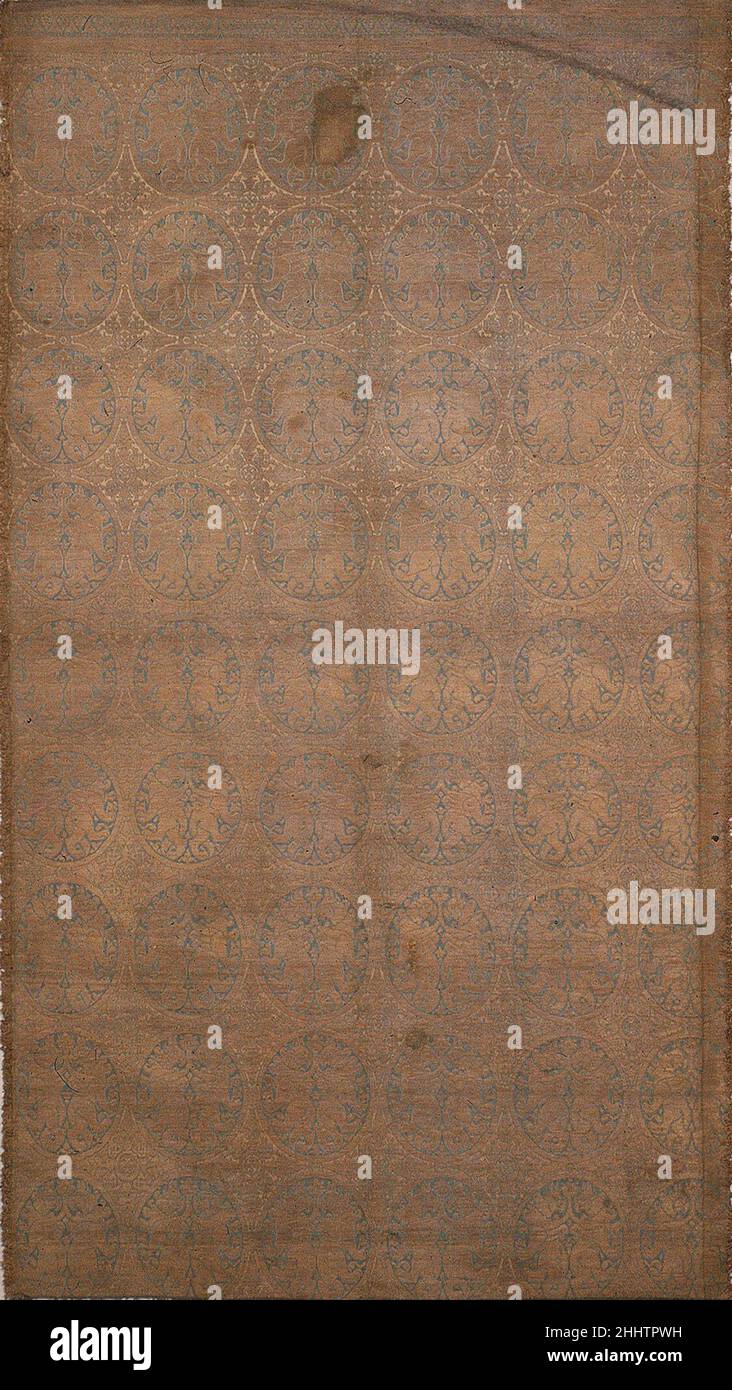Silk with Griffins first half 13th century Central Asian, Sicilian, or North African This exceptionally rare medieval textile is stylistically close to silks from the palls of 13th-century tombs excavated from the royal necropolis at Las Huelgas in Burgos. The extensive use of metallic threads creates a reflective quality and gives texture to the animated griffins. At the upper end, a band of repeating palmettes acts as a bridge to a partly lost pseudo-Kufic inscription. The piece is said to have been purchased from a Tibetan monastery, suggesting that it may have been sent eastward as a gift

Image details
Contributor:
MET/BOT / Alamy Stock PhotoImage ID:
2HHTPWHFile size:
6.4 MB (535.6 KB Compressed download)Releases:
Model - no | Property - noDo I need a release?Dimensions:
1127 x 2000 px | 19.1 x 33.9 cm | 7.5 x 13.3 inches | 150dpiDate taken:
19 January 2022More information:
This image is a public domain image, which means either that copyright has expired in the image or the copyright holder has waived their copyright. Alamy charges you a fee for access to the high resolution copy of the image.
This image could have imperfections as it’s either historical or reportage.
Silk with Griffins first half 13th century Central Asian, Sicilian, or North African This exceptionally rare medieval textile is stylistically close to silks from the palls of 13th-century tombs excavated from the royal necropolis at Las Huelgas in Burgos. The extensive use of metallic threads creates a reflective quality and gives texture to the animated griffins. At the upper end, a band of repeating palmettes acts as a bridge to a partly lost pseudo-Kufic inscription. The piece is said to have been purchased from a Tibetan monastery, suggesting that it may have been sent eastward as a gift soon after its manufacture.. Silk with Griffins. Central Asian, Sicilian, or North African. first half 13th century. Silk, silver-gilt metal on parchment over cotton. Textiles-Woven